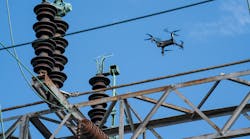EDSA has unveiled its Paladin SmartGrid software platform, a new software solution that removes a major obstacle to the widespread use of alternative energy. Paladin SmartGrid is a “master controller” enabling the use of on-premise and distributed energy sources – such as solar, wind, or local co-generation – without jeopardizing the reliability of the legacy utility grid.
Paladin SmartGrid is now nearing final testing at an undisclosed customer site, and is scheduled to be commercially released by the second quarter of 2010 – far ahead of the timeline that industry experts envisioned such vital technology becoming available. For example, industry analysts at the Galvin Initiative envisioned that “a fully functional master controller for micro grids does not yet exist,” noting that development of such a sophisticated platform could take “three to five years.” But by basing Paladin SmartGrid on Paladin Live – already deployed and proven in financial data centers, FAA facilities, public power grids, and other mission-critical operations – EDSA was able to bring the technology to market far faster than previously thought possible.
A significant focus in new smart grid programs involves Distributed Energy Resource (DER) systems, or “microgrids,” because – rather than relying solely on public power grids – they are intended to make standalone facilities both autonomous and integrated in order to enhance system efficiency, reduce overall energy costs, without degrading system reliability.
A major hurdle in the deployment of this renewable and distributed generation technology lies in how to monitor and control consumption and demand, and effect seamless real-time “switchovers” from one source to another. Paladin SmartGrid is the first commercially available software platform to enable the on-line management and control of next-generation “hybrid” power infrastructure incorporating both traditional utility power and on-premise power generation, e.g., co-generation, solar power, wind turbines, battery storage, etc.
Paladin SmartGrid optimizes energy consumption on site employing multiple energy sources, whether they are focused on a single objective – such as minimizing annual energy cost, carbon footprint, peak load, or public utility consumption – or a combination of objectives that vary by time, costs, energy source reliability, etc. As organizations increasingly seek to supplement their utility power with on-premise power generation, Paladin SmartGrid:
- Serves as a master controller for intelligent microgrid designs, monitoring and electricity trading (i.e., selling power back into the public grid)
- Monitors the microgrid’s power quality, utilization and capacity in real-time, in order to offer excess capacity to the Smart Grid
- Monitors all transactions between public electric service and microgrid infrastructure
- Maintains rate and pricing information for management of private-public exchange
For example, if a facility were to install on-premise solar panels, wind turbines, or co-generation capabilities, and use those sources to charge large on-site battery storage – while attempting to use public utility power as sparingly as possible – it becomes increasingly difficult to ensure power system reliability. Since inherently episodic energy sources may be unavailable when needed, a real-time balancing act is essential to ensure energy savings and environmental goals are met, while at the same time, guaranteeing that local-loop-wide power systems reliability is never jeopardized.
Paladin SmartGrid is inherently designed to monitor and enable management of the dynamic nature, and inherently lower power “quality” feature of alternative energy sources, to meet both energy management goals, and the high levels of availability and reliability. Paladin SmartGrid “remembers” the business and operational goals of a facility – e.g., only use utility power during off-peak hours, except when system reliability falls below 99.99% – and is continually diagnosing system performance in real-time while making intelligent predictions about how to seamlessly transition from one energy source to another.

